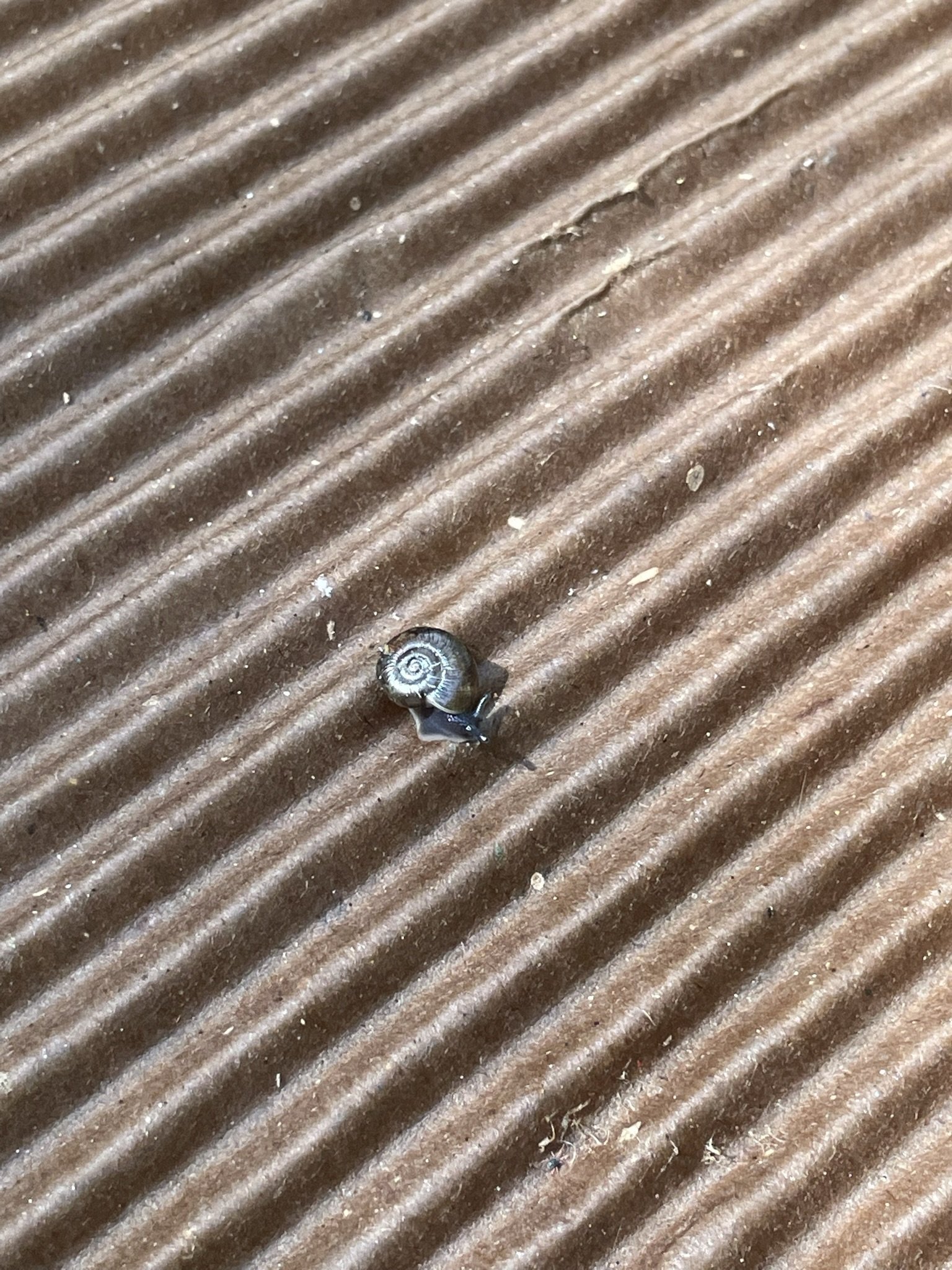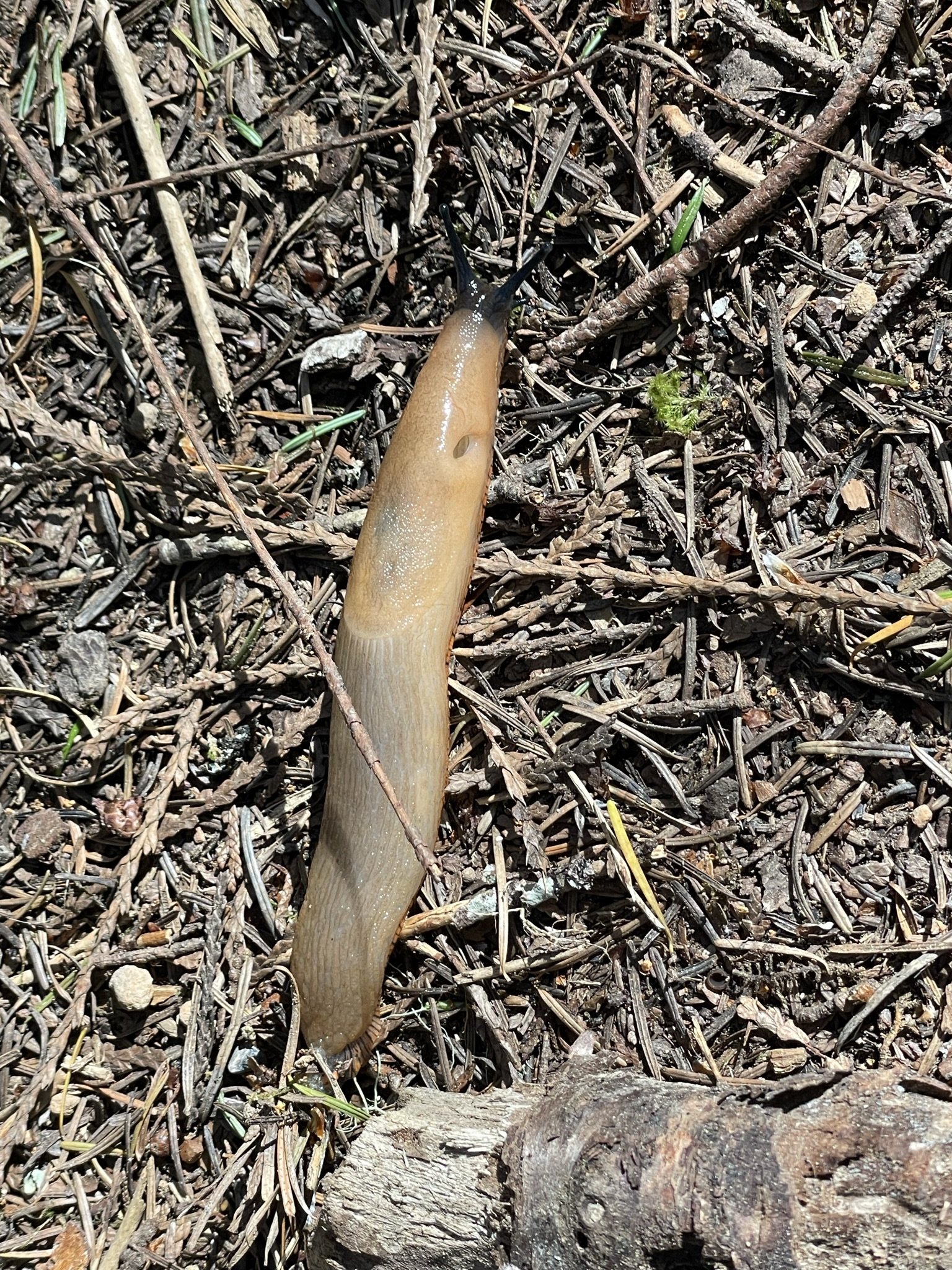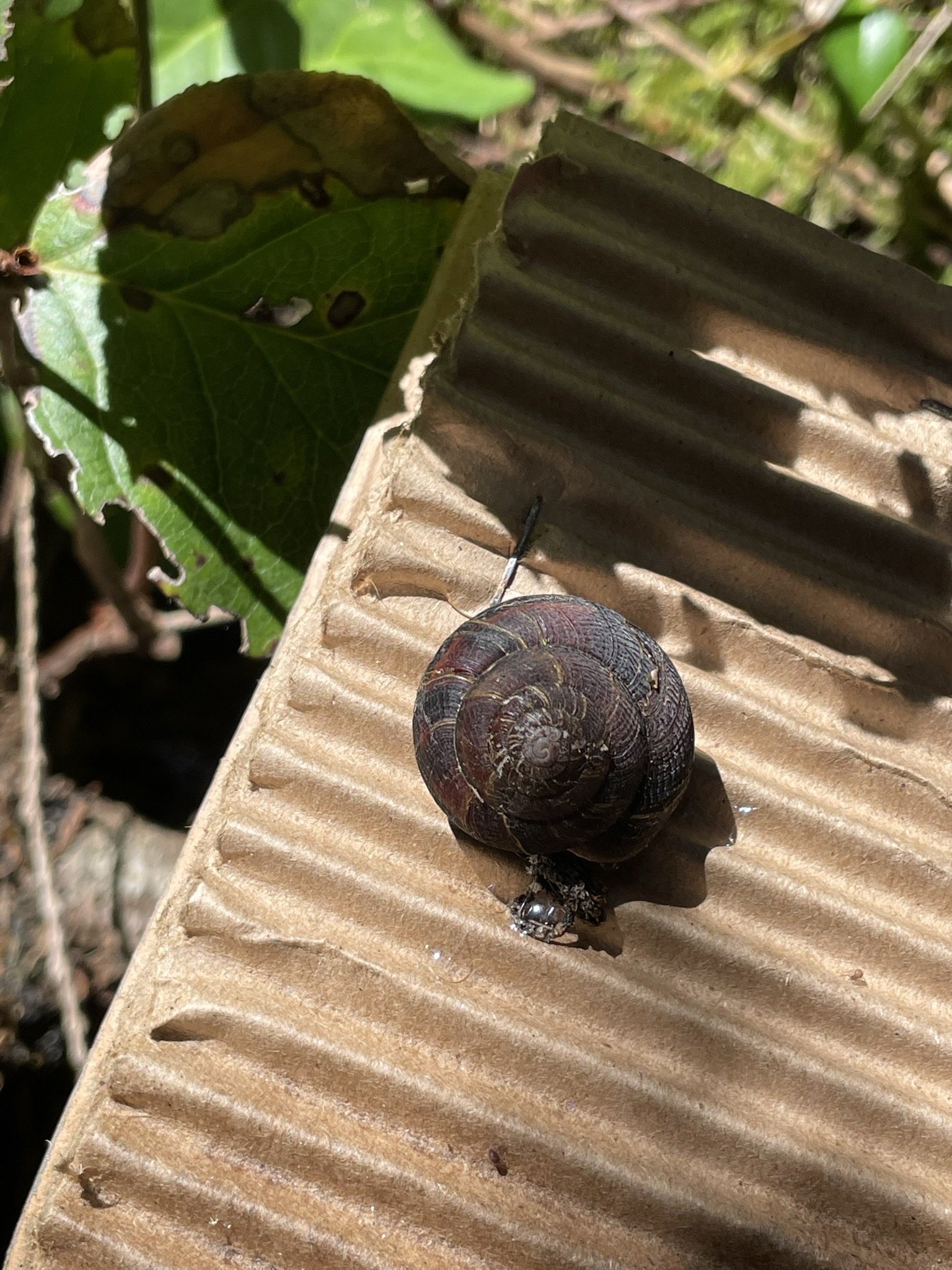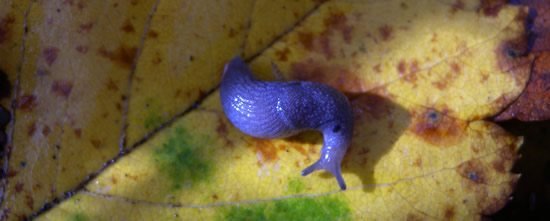Spring searching for the elusive blue slug
Last week, HAT staff Danielle and Julianna headed out to the forest to help biologists monitor for slugs and snails. Slugs and snails like to seek cover during the day, which can make them difficult to find when doing studies. Artificial cover objects (ACO’s) are simple ways to monitor for wildlife, without being too intrusive. ACO’s can be used for lots of different animals, and can look like roof shingles, plywood, or in this case, corrugated cardboard. The cardboard is moistened by the rain and therefore becomes a great hiding place for slugs and snails, as it mimics other woody debris found on the forest floor
Some species that HAT staff found while surveying for slugs and snails included the Pacific Sideband Snail, BC’s largest native snail, and the Robust Lancetooth snail, which is a predatorial snail, preying on earthworms, slugs and snails. As well, the Northwest Hesparian snail, whose shell’s waterproof outermost layer (the periostracum) is covered in small hairs, making the shell look furry. A few of the slugs that they found along their way were the native banana slug and the invasive chocolate arion slug. They were always keeping their eyes out for the endangered Blue-grey Taildropper (Prophysaon coeruleum) slug, but did not have any luck.
The Blue-grey Taildropper (BGT) is a small slug, up to 45mm long when extended. The BGT is a blue-grey, sometimes periwinkle blue color, often with fine white speckling, with parallel ridges and grooves on the back and sides of the tail. It prefers moist, mixed-wood forests, with lots of leaf litter for cover. It extensively eats fungi, including fungi that have mycorrhizal relationships with trees. This is important to forest health as there is thought that the BGT then spread spores throughout the forest floor, therefore promoting that mycorrhizal relationship further. True to its name, the BGT is capable of self-amputation of the tail. This is an anti-predator mechanism against species such as carnivorous snails and ground beetles.
Why is this species important? The BGT feeds on mycorrhizal fungi, which grow on roots and form an essential symbiotic relationship that helps trees capture nutrients. Biologists believe the slug spreads beneficial spores through its droppings. In general, slugs serve an important role in the ecosystem as decomposers, helping to recycle nutrients back into the soil, and they provide food for all sorts of mammals.
If you ever see a Blue-grey Taildropper, please take a picture and let us know!
Photo: Kristiina Ovaska
Learn more:
SARA Registry: COSEWIC Assessment and Status report on the Blue-grey Taildropper slug
Mayne Island Conservancy: Land Slugs and Your Garden
E-Fauna BC: The Land Snails of British Columbia






